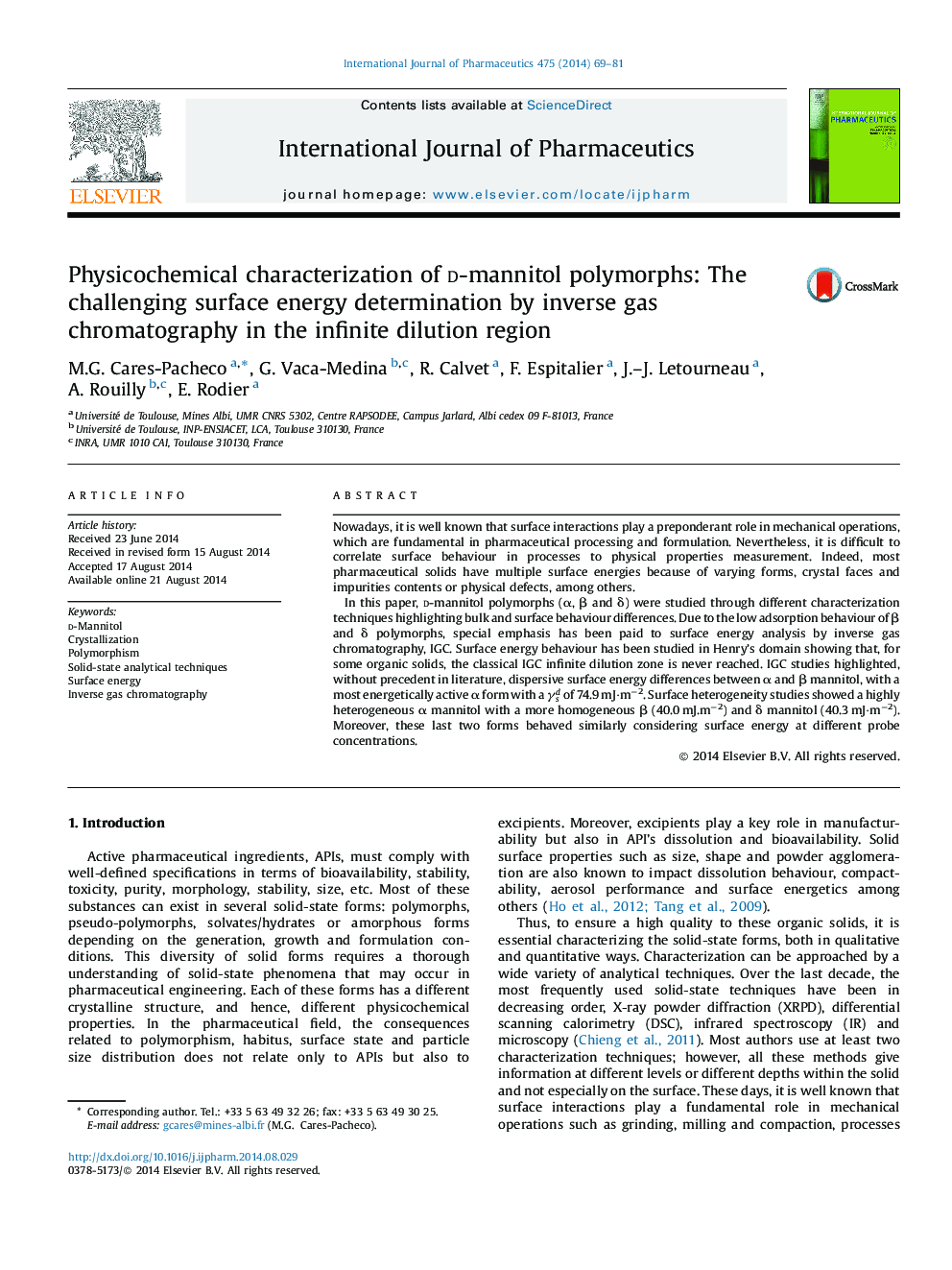| Article ID | Journal | Published Year | Pages | File Type |
|---|---|---|---|---|
| 2501630 | International Journal of Pharmaceutics | 2014 | 13 Pages |
Nowadays, it is well known that surface interactions play a preponderant role in mechanical operations, which are fundamental in pharmaceutical processing and formulation. Nevertheless, it is difficult to correlate surface behaviour in processes to physical properties measurement. Indeed, most pharmaceutical solids have multiple surface energies because of varying forms, crystal faces and impurities contents or physical defects, among others.In this paper, d-mannitol polymorphs (α, β and δ) were studied through different characterization techniques highlighting bulk and surface behaviour differences. Due to the low adsorption behaviour of β and δ polymorphs, special emphasis has been paid to surface energy analysis by inverse gas chromatography, IGC. Surface energy behaviour has been studied in Henry’s domain showing that, for some organic solids, the classical IGC infinite dilution zone is never reached. IGC studies highlighted, without precedent in literature, dispersive surface energy differences between α and β mannitol, with a most energetically active α form with a γsd of 74.9 mJ·m−2. Surface heterogeneity studies showed a highly heterogeneous α mannitol with a more homogeneous β (40.0 mJ.m−2) and δ mannitol (40.3 mJ·m−2). Moreover, these last two forms behaved similarly considering surface energy at different probe concentrations.
Graphical abstractFigure optionsDownload full-size imageDownload high-quality image (212 K)Download as PowerPoint slide
